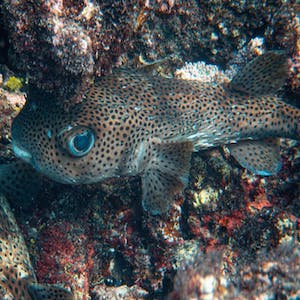Accidental discovery of a Tetraodontidae (Sphoeroides marmoratus) within a cuttlefish (Sepia officinalis) bought in a fish shop in Italy: risk assessment associated with the presence of Tetrodotoxin

Accepted: 14 February 2023
HTML: 6
All claims expressed in this article are solely those of the authors and do not necessarily represent those of their affiliated organizations, or those of the publisher, the editors and the reviewers. Any product that may be evaluated in this article or claim that may be made by its manufacturer is not guaranteed or endorsed by the publisher.
Authors
The discovery of a pufferfish specimen (Tetraodontidae) inside a frozen cuttlefish, purchased by a fishmonger, and caught in the central-east Atlantic (FAO 34) is reported. The consumer, who reported this case to FishLab (Department of Veterinary Sciences, University of Pisa) for investigation, was a student of Veterinary Medicine at the University of Pisa. He recognized the Tetraodontidae because he attended practical lessons on fish morphological identification during the course of food inspection and was aware of the risks to human health linked to the Tetrodotoxin (TTX). In this study, the pufferfish was identified morphologically, using the FAO morphological keys, and molecularly, analyzing two markers, the cytochrome oxidase I (COI) and the cytochrome b genes, by DNA barcoding. The pufferfish was identified morphologically as Sphoeroides spp., and molecularly as Sphoeroides marmoratus using the COI gene (99-100% identity values). Literature reports that S. marmoratus from the eastern Atlantic contains high concentrations of TTX in the gonads and the digestive tract. However, the possible passage of TTX from fish to other organisms linked to contact or ingestion has never been reported. This represents the first case of a potentially toxic pufferfish entering the market inside another organism. The fact that a student observed this occurrence highlights the key role of citizen science in the management of emerging risks.
How to Cite

This work is licensed under a Creative Commons Attribution-NonCommercial 4.0 International License.
PAGEPress has chosen to apply the Creative Commons Attribution NonCommercial 4.0 International License (CC BY-NC 4.0) to all manuscripts to be published.

 https://doi.org/10.4081/ijfs.2023.11117
https://doi.org/10.4081/ijfs.2023.11117



